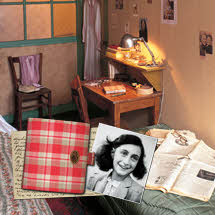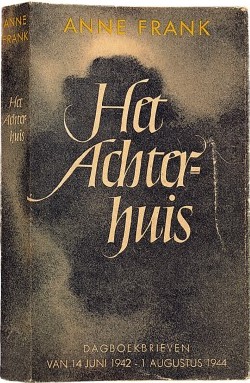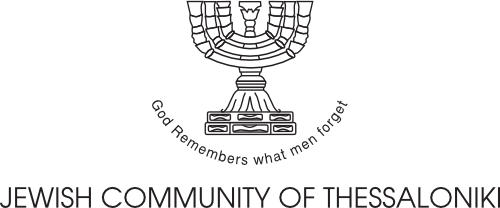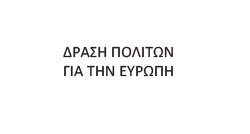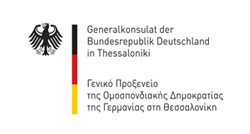“Children's Voices during World War II and the Holocaust„
Introduction
The Holocaust has influenced many writers from many countries, Jews and non-Jews, and inspired their work in wonderful ways. Very few books depict the horror the way photographs do. What's more, many young adult books have also been written on the subject and a great many of them are so well-written and raise such important issues that they could easily be read by adults as well.
The autobiographical texts and the diaries (unfortunately only one of the three available was written by a survivor) are the most authentic texts about the Holocaust. The "voices" in those are authentic instead of devised -we are not denying, of course, that fiction has also offered some excellent texts and "children's voices".
In this unit, we have chosen fictional or autobiographical texts concerning children's experiences from World War II. These books tell the stories of children; stories of children that were forced to mature abruptly, authentic stories. The stories told by fictional books are not terrifying at first glance. The terror is present, but it is implied and suggested. These stories are set mostly in the background of the war and the Holocaust. Literary texts can deeply affect children and make them empathize with the characters.
Autobiographical texts serve as irrefutable proof of the facts, while fiction (sometimes based on the author's experiences, sometimes not) recreates the experience of the war, adapting it for children. The fictional texts are either written by Jewish authors or they reconstruct the "voice" of Jewish children who speak either from the past or about the past.
The approach of testimony witness accounts as autobiographical texts, which is classified in the genres of autobiographical narratives of war and literature of trauma, cannot be seen independently of the historical context. When we study the personal story of a survivor, we identify with the story of the hero in the context of historical correlations of the personal history of a person with the history of the Holocaust.
At a second stage, we can pursue an intertextual approach, combining these books with relevant movies, songs, postcards and photographs from the Holocaust museums.
Main Body
Autobiographies
The autobiographies and diaries we propose are not homogenous: some were written while the author was still a child and their voice was completely “authentic” while others were written after the author had reached adulthood.
The Diary of a Young Girl (also known as The Diary of Anne Frank)
Summary
This is the diary of thirteen-year-old Anne Frank, of German-Jewish origin, who was hiding in the Netherlands with her family for 4 years until their hide-out was compromised and she was sent to a concentration camp where she eventually died. In her diary, which she kept from June 14, 1941 until August 1, 1944, when she was captured, Anne describes everyday life under Nazi Occupation, but also her fears and dreams, which are not that different from those of any girl her age.
Anne Frank’s history in brief: http://www.annefrank.org/en/Anne-Frank/Anne-Franks-history-in-brief/ https://en.wikipedia.org/wiki/The_Diary_of_a_Young_Girl
Laskier, Rutka (2007). Rutka's Notebook: January-April 1943. Foreword by Dr. Zahava Sherz; historical introduction by Dr. Bella Gutterman. Jerusalem, Israel: Yad Vashem Publications.
Summary
This is the diary of Rutka Laskier, a fourteen-year-old Jew from Bedzin, which narrates the last few months of her life (January-April 1943) in the ghetto, before she was captured and killed along with her mother and brother in the gas chambers of the Auschwitz-Birkenau concentration camp. The 60 handwritten pages of her diary would remain hidden under the staircase of her home for 62 years, a hiding spot that nobody but her Polish friend, Stanislawa Sapinska, knew of. She was the one to hand it to Adam Szydlowski, a researcher of the life of Jews in the area. When her half sister was informed of its existence, in 2006, she decided to have it published.
Information about the author in English: https://en.wikipedia.org/wiki/Rutka_Laskier
Erika Kounio-Amariglio (1996). Fifty years later: Memories of a Jew from Salonica, Publications Epikentro.
Summary
This book is the personal account of Erika Kounio-Amariglio, who was sent with her family to the Auschwitz and Ravensbruk concentration camps where she experienced the terror of Nazi brutality, 50 years later. She was one of the few Holocaust survivors who returned to Thessaloniki after the war. Her personal account is supported by photographic material from that period.
Erika-Myriam Amariglio, maiden name Kounio, was born in 1926 in Thessaloniki. In March 1943 she was sent with her family to the Auschwitz-Birkenau concentration camp and shortly after to the Ravensbruck camp. After returning to Thessaloniki, she was married to Rodolph Amariglio in 1947 and she had two children. Erik and Teresa. During 1989-1991 she collaborated with Alberto Nar, taking interviews from the few remaining survivors of the Holocaust, which were published in 1998 by the Jewish community of Thessaloniki under the title Personal accounts of the Jews of Thessaloniki about the Holocaust. In 1995, she published her personal account under the title Fifty years later: Memories of a Jew from Salonica. Her book has been translated into German, English, Hebrew and Serbian. She passed away in Thessaloniki in 2011.
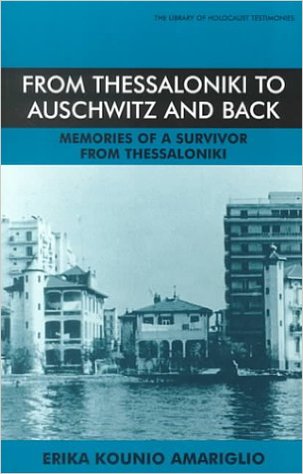
Source: amazon.com
Other books:
Hélène Berr: The Journal of Hélène Berr, Translated by David Bellos with notes by the translator and an afterword by Mariette Job, 2008, McClelland & Stewart, Toronto.
Information about the author in English: https://en.wikipedia.org/wiki/H%C3%A9l%C3%A8ne_Berr
Novels
Ross, Stewart (2005[2001]). The star houses: A story from the Holocust/trans. Stavros Papastavrou. Athens: Savvalas.
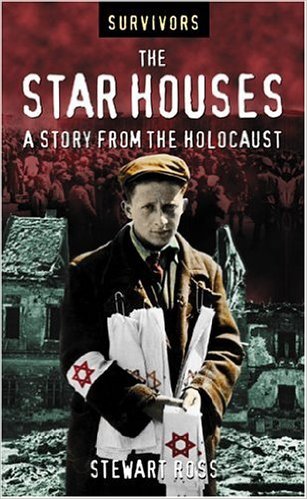
Summary
The book tells the story of Bandi Guttmann, a 14-year old Hungarian Jew, and his family. Once Budapest has been occupied by Germans life changes dramatically and the struggle for survival begins, as they are set aside from the local community and denied basic human rights.
Information about the author
A prolific British author, he has written over 270 books, on various subjects. He has been distinguished for his children books. He teaches in Universities in the UK. He lives in Canterbury, in England.
Source: amazon.com
John Boyne (2006). The boy in the Striped Pyjamas/trans. Ariadni Moschona. Athens: Kedros.
Summary
Bruno, a nine-year-old boy, son of a Nazi officer and friend of Hitler, loses all of his friends when his father is promoted to Commandant and they move away from Berlin. But soon he meets Shmuel , a Jewish boy at the other side of the camp's fence, and they become close friends. One day, Bruno decides to cross the fence, wearing the striped uniform of the prisoners, and ends up being exterminated along with hundreds of Jews. When his father finds the boy's clothes in the camp, even though he realizes how his son died, he refuses to regret his actions or change his stance towards the prisoners.
Information about the author
John Boyne was born in Ireland in 1971. He studied and lives in Dublin. He teaches at the University of East Anglia, in Norwich, Ireland. He has written seven novels for adults, while The boy in the Striped Pyjamas was his first young adults book; others followed. The boy in the Striped Pyjamas was translated into 42 languages and sold more than five million copies worldwide. It was also successfully adapted for the cinema.
Information about the book in English: https://en.wikipedia.org/wiki/The_Boy_in_the_Striped_Pyjamas
Fred Uhlman (198515[1971]). Reunion/trans. Vito Aggelopoulou, introduction by Arthur Kessler. Athens: Patakis.
Summary
A letter revives the friendship that had arisen thirty years earlier between sixteen-year-old Hans Shwartz, only son of a Jewish doctor, and his at the time new classmate, Conrad von Hohenfels, a typical German of the Aryan race. The story unfolds in Stuttgart in 1932, a time when antisemitism was on the rise in Germany, a fact which led to the break-up of the friendship of the two boys.
Information about the author
Born in Stuttgart to Jewish parents in 1901, he passed away in England in 1985. He was a prolific author, a famous painter and a lawyer. In 1933, as soon as Hitler assumed power, Uhlman escaped to Paris and, through many hardships, ended up in London where he remained until his death.
Information about the book in English: https://en.wikipedia.org/wiki/Reunion_(1971)
Hana's Suitcase: A True Story
by Karen Levine (Goodreads Author)
Summary
This is a true story. In 2000, a suitcase arrives at a children's Holocaust education center in Tokyo, Japan, marked "Hana Brady, May 16, 1931." The center's curator searches for clues to young Hana and her family, whose happy life in a small Czech town was turned upside down by the invasion of the Nazis.
Information about the author:
Karen Levine is a Canadian radio producer with CBC Radio. She has won many awards for her radio work, including two Peabody Awards(the Oscars of radio). Levine originally produced Hana's Suitcase as a radio documentary and later made it into a book.
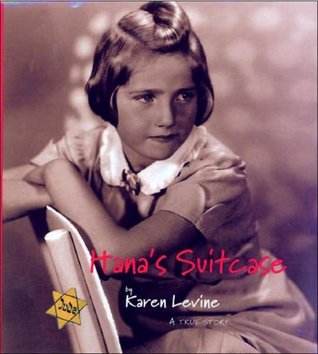
Source: http://www.goodreads.com/book/show/948584.Hana_s_Suitcase
Adult Novels
We cannot possibly talk about literature concerning the Holocaust and not make a reference to two of the most emblematic works of Primo Levi.
Primo Levi (1997). If this is a Man/trans. Hara Sarlikioti. Athens: Agra
Summary
If this is a Man, written in 1947, is considered a masterpiece of literature worldwide. It consists of one of the most staggering accounts of the concentration camps, and it has been included in the Italian school curriculum since the '60s.
Information about the book in English: https://en.wikipedia.org/wiki/If_This_Is_a_Man
The Drowned and the Saved
Primo Levi (1919-1987) does not approach his experiences in Nazi concentration camps as history's accident, but as an example which allows us to understand just how far man can go, once assigned the role of the perpetrator or the victim.
The author provides his own understanding in this last work of his, written shortly before his death, a work which completes the trilogy of If this is a Man (1946) and The Truce (1963).
Information about the book in English: https://en.wikipedia.org/wiki/The_Drowned_and_the_Saved
Information about the author in English: https://en.wikipedia.org/wiki/Primo_Levi
Viktor Frankl (2010[2006]). Man's Search for Meaning/transl. and foreword: Giorgos-Iakros Babasakis. Athens: Psyhogios.
Frankl's books are an excellent source for understanding mental resilience, not only from a psychological but also from a philosophical point of view.
Information about the author (in English): https://en.wikipedia.org/wiki/Viktor_Frankl
Information about the book in English:
https://www.ted.com/talks/viktor_frankl_youth_in_search_of_meaning
https://en.wikipedia.org/wiki/Man%27s_Search_for_Meaning
Eric-Emmanuel Schmitt (2007[2004]). Noah's Child/transl. Ioanna Petridou, ed. Achilleas Kyriakidis. Athens: Opera.
English
https://www.amazon.com/Noahs-Child-Ric-Emmanuel-Schmitt/dp/1848874189
Summary
In 1942, seven-year-old Joseph is sent by his parents to Father Pons, a priest in the Belgian countryside, who has made it his life's goal to save children from the horror of the Holocaust. Like another Noah, he has secretly turned the boarding school he manages into an ark for the salvation of numerous Jewish children. It is a novel which celebrates friendship, acceptance of the unknown and the different, self-sacrifice and courage, while condemning war, violence and prejudice.
Information about the author
Eric-Emmanuel Schmitt was born in Lyon in 1960. He studied Philosophy at the École Normale Superieure and he is considered one of the most influential French playwrights. His plays have been translated and staged in over thirty countries all over the world. He has also written novels and essays.
https://de.wikipedia.org/wiki/%C3%89ric-Emmanuel_Schmitt
Other titles:
Aharon Appelfeld (2007[1999]). The story of a life/transl. Maggie Cohen. Athens: Estia.
Information about the book in English: https://en.wikipedia.org/wiki/The_Story_of_a_Life:_A_Memoir
Information about the author (in English): https://en.wikipedia.org/wiki/Aharon_Appelfeld#Published_works
Jerzy Kosinski (2006[1965]). The painted bird/transl. Trisevgeni Papaioannou. Athens: Metaichmio Publications.
Information about the book in English: https://en.wikipedia.org/wiki/The_Painted_Bird
Information about the author (in English): https://en.wikipedia.org/wiki/Jerzy_Kosi%C5%84ski
Photos
We suggest photos which do not realistically depict the horror of the Holocaust. These photos were taken in the Auschwitz-Birkenau concentration camp. The photos were taken by Eleni Hodolidou during her visit there and are copy left.

Dorms in Birkenau
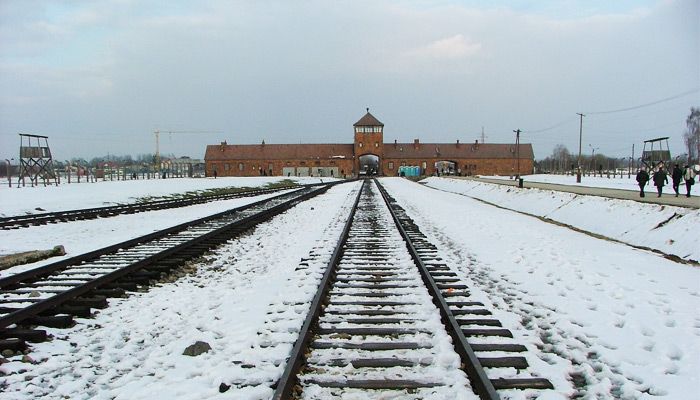
The Birkenau concentration camp gate

Suitcases of dead Jews, who were ordered to write their names on them so they could find them afterwards (Auschwitz Holocaust Museum)
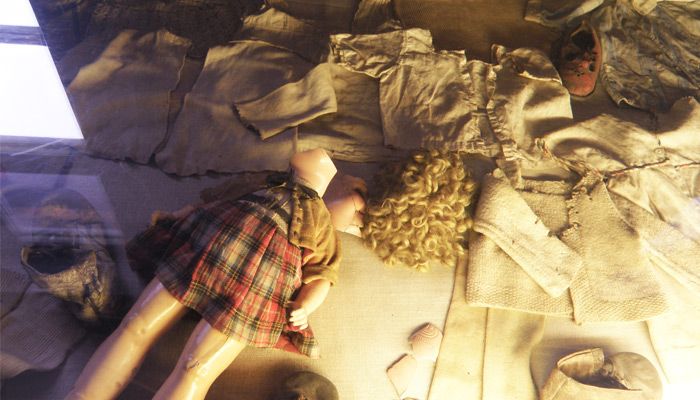
Toys and children’s clothes (Auschwitz Holocaust Museum)

Pile of shoes (Auschwitz Holocaust Museum)

Picture of Auschwitz

At the end of the March of the living anyone who wishes to can write down the name of the relatives they have lost, a wish, or simply their name
Films
Herman, Mark (2008) The boy in the Striped Pyjamas
Roman Polanski (2002)The Pianist
Information about the film in English
When Hitler decides to invade Poland, the hunt against Jews begins. Among them, Władysław Szpilman, a famous pianist. He is transferred to a ghetto in Warsaw along with his family, waiting to be transferred to a concentration camp. Szpilman manages to hide, thanks to his reputation. He ends up living alone and frightened in the ruins of the ghetto. Information about the film in English
Kisses to the Children
Original Greek title: Filia eis ta pedia ,written and directed by Vassilis Loules
Songs
The Jews were not the only victims of the Holocaust. Of course, they represented the majority of the victims. However, communists, Roma, homosexuals and the mentally ill also suffered from Nazi violence. As in literature, the Holocaust served as inspiration for various types of music: classical, popular, folk and pop music was written for all Holocaust victims.
Song of Songs (The Ballad of Mauthausen)
Music: Mikis Theodorakis
Lyrics: Iakovos Kambanellis
Source: amazon.com
Lyrics
How lovely is my love
in her everyday dress
with a little comb in her hair.
No-one knew how lovely she was.
Girls of Auschwitz,
girls of Dachau,
did you see my love?
We saw her on a long journey;
she was no longer wearing her every day dress
or the little comb in her hair.
How lovely is my love
caressed by her mother
and her brother’s kisses.
Nobody knew how lovely she was.
Girls of Mauthausen
girls of Belsen
did you see my love?
We saw her in the frozen square
with a number on her white hand
with a yellow star on her heart.
How lovely is my love
caressed by her mother
and her brother’s kisses.
Nobody knew how lovely she was.
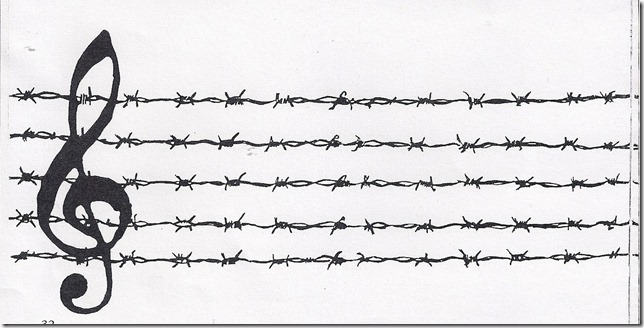
Roma song about Auschwitz
Gypsy holocaust Auschwitz song Latcho Drom
Lyrics
Oh! The black bird entered my heart and stole it
I live here in Auschwitz, here in Auschwitz I starve
Not even a piece of bread.
There’s nothing to it, there’s only bad luck here.
I had a home, once.
I am so hungry I could kill!
Oh! Jesus…
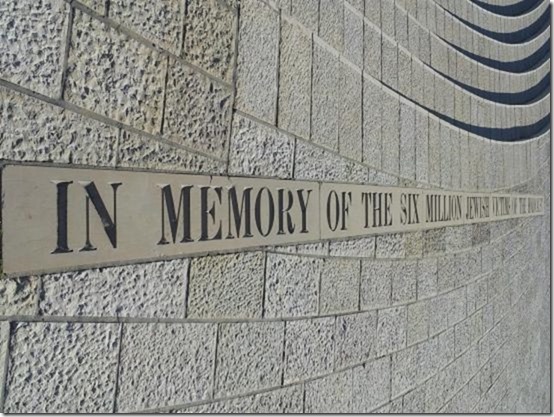
Holocaust Dedication Song “Yiskerem”
We cannot bring the dead back to life, but we can retain their memory and assure them that they have not been forgotten. We can do in our lives what they were so violently denied in theirs.
Commemoration is the ultimate and perhaps the most meaningful way to pay respect to the victims of genocide. For the perpetrators of genocide attempt not only to exterminate the people, but also to eliminate their existence from collective memory. We survive and we remember. We heal ourselves and help heal others as well.
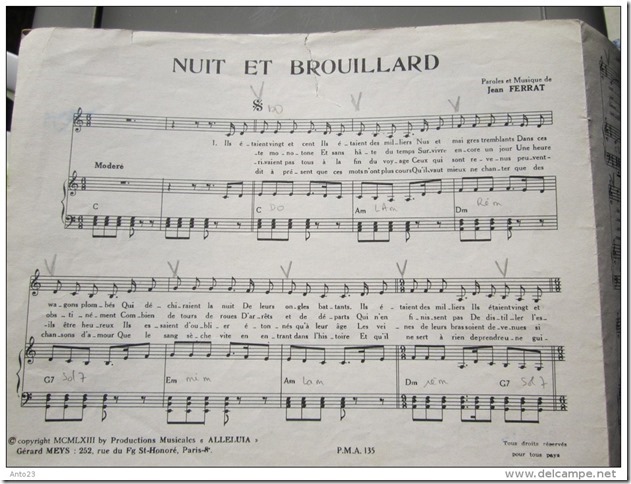
Other songs
NEVER AGAIN - A song to remember the Holocaust
Holocaust-Mad World
Nuit Et Brouillard-Jean FERRAT
Postcards
A suitcase, teenage-magazine type instructions about how to look healthy and a nutritional information card. However, the postcards are not as innocent as they appear to be.
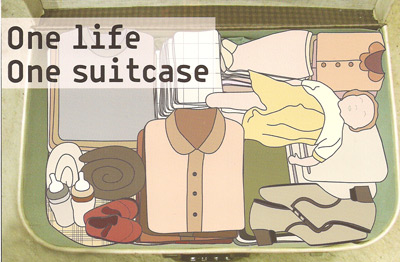


On the back of the card we find the following:



More information
Relevant information can be found on:
The Yad Vashem educational programs website
http://www.yadvashem.org/
Educational material
http://www.yadvashem.org/yv/en/education/educational_materials/index.asp
On the website of the United States Holocaust Memorial Museum
Teaching about the Holocaust
http://www.ushmm.org/educators/teaching-about-the-holocaust
Guidelines for teaching about the Holocaust
http://www.ushmm.org/educators/teaching-about-the-holocaust/general-teaching-guidelines
Holocaust Encyclopaedia
http://www.ushmm.org/wlc/en/article.php?ModuleId=10007262
Browse all photographs
https://www.ushmm.org/wlc/en/media_list.php?MediaType=PH



